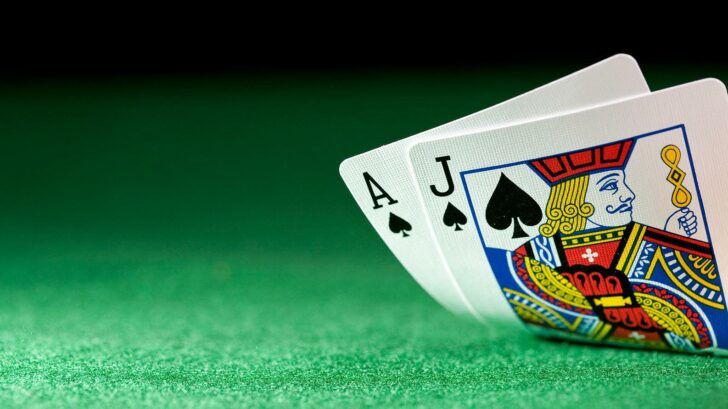How Can Standard Deviation Help Your Blackjack Game

While poker requires people reading skills to win and roulette just requires a hell of a lot of luck, blackjack on the other hand boasts one of the lowest houses edges in the casino, making it the game to place your bets on, but how can you use mathematics to your advantage?
It doesn’t take long to learn perfect basic blackjack strategy, and if you know what you’re doing you can even get as far as lowering the house edge to 0.5%.
The house edge alone is not a determining factor in whether you win or lose, since the unexpected always happens in cards, which is why it’s called gambling in the first place, but there is a mathematical area for deviation that can give you an insight into your winning and losses.
The secret behind blackjack lies in the mathematics behind statistics, in the variance and its standard deviation.
Deviating from the standard
When you use strategy to lower the house edge down to 0.5%, theoretically this means that after playing a certain amount of time, you’ll lose 0.5% of your money, which goes back to the casino.
Some basic blackjack strategy tips:
• Always hit a hard 4 to 8
• Always stand on a hard 17 and on any combination above 18
• Surrender a 16 versus 10
• Double a hard 10 or 11 if more than the dealer
However, real life is not as simple as that, since there is always room for a variation, which mathematically is deemed as the “variance”, which is calculated by measuring the standard deviation.
In statistics, probability is not an act of chaos with no pattern, but rather follows a bell curve, where the middle corresponds with the average, and the distribution shows all the possible outcomes and their probabilities.
The standard deviation is essentially the number marking the number of units falling to each side of the average, which means that 68% of the outcomes will fall within the standard deviation of the average.
Mathematically, this also means that 95% and 99.7% of the outcomes will fall within 2 and 3 standard deviations, respectively.
Standard deviation and its effect on blackjack
If you account for all the blackjack rules and basic strategy of blackjack, the standard deviation of the game falls at the value of 1.14, in general.
This means that in a game with a 0.5% house edge, the standard deviation marks the odds to win and lose on both sides of the bell curve. This means that 68% of the time you’d either win or lose 1.14 units, and 95% of the time win or lose 2.28 units.
But again, statistics also shifts depending on how many hands you play, and the more hands you do play mean that you get closer to the average. Thereby by including the variable of your dealt hands, you can predict your winning and losing likelihood by a fixed number.
To calculate the amount you win or lose, you basically take the square root of the number of hands played and multiply by 1.14.
So that means for 100 hands of blackjack, yields a standard deviation of 11.4 in this case. So betting, say, $1 per hand would yield an expected loss of 50cents, since the house edge is 0.5% (for 200 hands, this would go up to $1).
If you play 100 hands, then there is a 68% chance you could win or lose $11.4, for example. While there is room for manoeuvre, you can use standard deviation to budget your losses.
Show me the money
Let’s take a more concrete example. Let’s see how often you would lose $50 in a game of blackjack using the above examples.
To calculate this you need to factor in the expected loss (50cents for 100 hands) and measure the difference from the actual loss ($50 in this case). So the difference applied here is $49.5.
You then need to apply the standard deviation for your set of hands, so for 100 hands this is 11.4, as seen before, and divide this difference so 49.5/11.4 = 4.34.
This means losing $50 is over 3 standard deviations, so the chances of winning or losing the amount is in the margin of around 0.3% of time.
Using standard deviation can help you to optimize and minimize your risk. Playing 100 hands of blackjack and betting $1, with setting your maximum loss at $50, means that you’re only likely to lose that amount 0.3% of the time.
To maximize your blackjack game, you simply need a smart strategy and a bit of statistics know-how.
Playing with standard deviation means you can leave your card counting system at home for once, and not get yourself banned from a casino.









